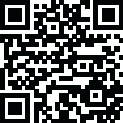
Latest Version
Version
1.0
1.0
Update
November 22, 2024
November 22, 2024
Developer
PIZY Studio
PIZY Studio
Categories
Tools
Tools
Platforms
Android
Android
Visits
0
0
License
Free
Free
Package Name
com.pizyobd2codeguide.web
com.pizyobd2codeguide.web
Report
Report a Problem
Report a Problem
More About OBD2 Code Guide
Our app provides a comprehensive guide to OBD-II error codes, standardized codes used in vehicle diagnostic and reporting systems. These codes identify faults and issues across various vehicle systems, crucial for accurate diagnosis and repair.
OBD-II codes consist of five characters, each with specific meanings.
The first character denotes the system:
P (Powertrain): Codes related to the engine and transmission.
B (Body): Codes related to vehicle body systems such as airbags and electric windows.
C (Chassis): Codes concerning chassis systems like ABS and suspension.
U (Network): Codes related to in-vehicle communication systems like CAN-Bus errors.
Each code structure follows:
1st Character (System): P, B, C, or U.
2nd Character (Manufacturer-specific or generic code): 0, 1, 2, or 3 (0 and 2 are generic, 1 and 3 are manufacturer-specific).
3rd Character (Subsystem): Specifies which part of the system (e.g., fuel, ignition, transmission).
4th and 5th Characters (Specific error): Describe the exact nature of the fault.
For instance:
P0300: Random/Multiple Cylinder Misfire Detected.
B1234: Manufacturer-specific body code, such as Airbag Circuit Disabling Error.
C0561: Chassis Control Module Error.
U0100: CAN-Bus Communication Error with Engine Control Module (ECM/PCM).
Understanding these codes correctly is essential for pinpointing issues and performing accurate repairs on vehicles.
The first character denotes the system:
P (Powertrain): Codes related to the engine and transmission.
B (Body): Codes related to vehicle body systems such as airbags and electric windows.
C (Chassis): Codes concerning chassis systems like ABS and suspension.
U (Network): Codes related to in-vehicle communication systems like CAN-Bus errors.
Each code structure follows:
1st Character (System): P, B, C, or U.
2nd Character (Manufacturer-specific or generic code): 0, 1, 2, or 3 (0 and 2 are generic, 1 and 3 are manufacturer-specific).
3rd Character (Subsystem): Specifies which part of the system (e.g., fuel, ignition, transmission).
4th and 5th Characters (Specific error): Describe the exact nature of the fault.
For instance:
P0300: Random/Multiple Cylinder Misfire Detected.
B1234: Manufacturer-specific body code, such as Airbag Circuit Disabling Error.
C0561: Chassis Control Module Error.
U0100: CAN-Bus Communication Error with Engine Control Module (ECM/PCM).
Understanding these codes correctly is essential for pinpointing issues and performing accurate repairs on vehicles.
Rate the App
Add Comment & Review
User Reviews
Based on 100 reviews
No reviews added yet.
Comments will not be approved to be posted if they are SPAM, abusive, off-topic, use profanity, contain a personal attack, or promote hate of any kind.
More »










Popular Apps

QR Code Reader - PRO Scanner 5SebaBajar, Inc

Document ScanMaster PROSebaBajar, Inc

Screen Video Recorder 5SebaBajar, Inc

Steam Chat 5Valve Corporation

다음 사전 - Daum Dictionary 5Kakao Corp.

Video Editor - Trim & Filters 5Trim Video & add filters

Mr. Pain 5Get ready for the pain!

Last Island of Survival 5How would you survive?

Evil Superhero black web alien 5alien games superhero fighting

Step Counter - Pedometer 5Leap Fitness Group
More »










Editor's Choice

Kids English: Voice and Quiz 5AppBajar

Learn Bengali from English 5Advanced Apps Studio

Learn Bengali Easily 5SebaBajar, Inc

noplace: make new friends 5find your community

QR Code Reader - PRO Scanner 5SebaBajar, Inc

Document ScanMaster PROSebaBajar, Inc

Screen Video Recorder 5SebaBajar, Inc

Easy Barcode Scanner - QR PROSebaBajar, Inc

SebaBajar PartnerSebaBajar, Inc

Google Meet (original)Google LLC





















